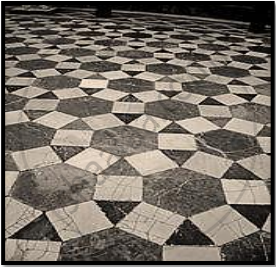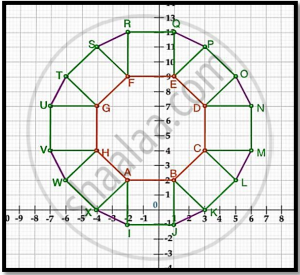Advertisements
Advertisements
प्रश्न
In what ratio does the point (−4, 6) divide the line segment joining the points A(−6, 10) and B(3,−8)?
उत्तर
The co-ordinates of a point which divided two points `(x_1,y_1)` and `(x_2, x_2)` internally in the ratio m:n is given by the formula,
`(x,y) = (((mx_2 + nx_1)/(m + n))","((my_2 + ny_1)/(m + n)))`
Here it is said that the point (−4,6) divides the points A(−6,10) and B(3,−8). Substituting these values in the above formula we have,
`(-4, 6) = (((m(3) + n(-6))/(m + n))"," ((m(-8) + n(10))/
(m + n)))`
Equating the individual components we have,
`-4 = (m(3) + n(-6))/(m + n)`
-4m - 4n = 3m - 6n
7m = 2n
`m/n = 2/7`
Therefore the ratio in which the line is divided is 2 : 7
APPEARS IN
संबंधित प्रश्न
On which axis do the following points lie?
R(−4,0)
If G be the centroid of a triangle ABC, prove that:
AB2 + BC2 + CA2 = 3 (GA2 + GB2 + GC2)
The points A(2, 0), B(9, 1) C(11, 6) and D(4, 4) are the vertices of a quadrilateral ABCD. Determine whether ABCD is a rhombus or not.
If the points p (x , y) is point equidistant from the points A (5,1)and B ( -1,5) , Prove that 3x=2y
Show that the following points are the vertices of a rectangle.
A (2, -2), B(14,10), C(11,13) and D(-1,1)
The line segment joining the points A(3,−4) and B(1,2) is trisected at the points P(p,−2) and Q `(5/3,q)`. Find the values of p and q.
In what ratio does the point P(2,5) divide the join of A (8,2) and B(-6, 9)?
The base BC of an equilateral triangle ABC lies on y-axis. The coordinates of point C are (0, -3). The origin is the midpoint of the base. Find the coordinates of the points A and B. Also, find the coordinates of another point D such that ABCD is a rhombus.
Find the area of the triangle formed by joining the midpoints of the sides of the triangle whose vertices are A(2,1) B(4,3) and C(2,5)
Find the coordinates of the centre of the circle passing through the points P(6, –6), Q(3, –7) and R (3, 3).
Show that A(-4, -7), B(-1, 2), C(8, 5) and D(5, -4) are the vertices of a
rhombus ABCD.
Points (−4, 0) and (7, 0) lie
The abscissa of any point on y-axis is
If (x, y) be on the line joining the two points (1, −3) and (−4, 2) , prove that x + y + 2= 0.
Find the value of k, if the points A (8, 1) B(3, −4) and C(2, k) are collinear.
The distance between the points (a cos 25°, 0) and (0, a cos 65°) is
If the distance between the points (4, p) and (1, 0) is 5, then p =
If (−2, 1) is the centroid of the triangle having its vertices at (x , 0) (5, −2), (−8, y), then x, y satisfy the relation
The point R divides the line segment AB, where A(−4, 0) and B(0, 6) such that AR=34AB.">AR = `3/4`AB. Find the coordinates of R.
A tiling or tessellation of a flat surface is the covering of a plane using one or more geometric shapes, called tiles, with no overlaps and no gaps. Historically, tessellations were used in ancient Rome and in Islamic art. You may find tessellation patterns on floors, walls, paintings etc. Shown below is a tiled floor in the archaeological Museum of Seville, made using squares, triangles and hexagons.

A craftsman thought of making a floor pattern after being inspired by the above design. To ensure accuracy in his work, he made the pattern on the Cartesian plane. He used regular octagons, squares and triangles for his floor tessellation pattern

Use the above figure to answer the questions that follow:
- What is the length of the line segment joining points B and F?
- The centre ‘Z’ of the figure will be the point of intersection of the diagonals of quadrilateral WXOP. Then what are the coordinates of Z?
- What are the coordinates of the point on y-axis equidistant from A and G?
OR
What is the area of Trapezium AFGH?
